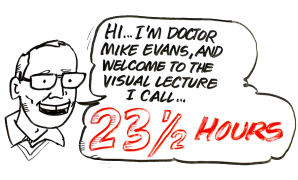To see in PDF form: Caregiver sheet1
10 Steps to Recognize and Manage Caregiver Stress
Step 1 – Check for Signs of Stress
Denial about the illness and its effect on the patient and your situation. “I know Dad will get better.”
Anger at the person with the illness and frustration or disbelief that he can’t do the things he used to be able to do. “He knows how to get dressed — he’s just being stubborn and not really trying.”
Social withdrawal from friends and activities that you used to enjoy. “I don’t feel like going out with friends anymore.”
 Anxiety about the future. “What happens when he gets worse and needs more care than I can provide?”
Anxiety about the future. “What happens when he gets worse and needs more care than I can provide?”
Depression that breaks your spirit and affects your ability to cope. A feeling of giving up: “I just don’t care anymore.”
Exhaustion that makes it very difficult to complete everyday tasks. “I’m too tired for all of this.”
Sleeplessness caused by thinking about a never-ending list of concerns. “What if she wanders or falls and hurts herself?”
Irritability and moodiness which triggers negative responses and reactions. “Don’t bother me!”
Lack of concentration that makes it difficult to do easy tasks, preoocupation: “I was so busy, I forgot my appointment.”
Health problems that become chronic. “I can’t remember the last time I felt good.”
See also: www.alz.org
Step 2 – Notice any Symptoms of Caregiver Burnout
“Negative” emotions: Consistent “negative” feelings such as anger, anxiety, dissatisfaction and guilt.
Interpersonal problems: Conflict with others, emotional outbursts, overreacting, hostility, withdrawal.
Health Problems: Frequent insomnia, fatigue, headaches, backaches, lethargy and high blood pressure.
Poor performance: Boredom, lack of enthusiasm, feelings of fear or an inability to concentrate. See “mindfulness” below.
Substance abuse: Marked increase in the use of alcohol and/or other drugs, cigarette smoking, caffeine and food.
 Workaholism: Working more hours due to feelings of inadequacy, belief that the more we work, the better we will feel.
Workaholism: Working more hours due to feelings of inadequacy, belief that the more we work, the better we will feel.
Depression: Depression is the suppression of emotions, a feeling of hopelessness and meaninglessness.
Loss of self-esteem: Loss of self-esteem with a decrease in self-confidence and initiative
Be aware of the 3 stages of caregiver burnout: frustration, isolation and despair. See also: www.alsa.org
Step 3 – Get Organized and Take Care of the Basics
Educate yourself about your loved one’s disease. Study and talk to your health professionals. Realize that in talking to friends and relatives despite their good intentions they will give you some disinformation.
Seek and accept support – build your CARE CIRCLE, those in your community who will help you in different areas. Includes friends and relatives but also any service business you deal with will be happy to help you as much as they can!
Identify unrealistic expectations. Expect gradual progress, each day in hospital = at least 3 days recovery.
Identify what you still have rather than what is lost and let go of what cannot be changed.
Keep track of medications, get a med planner and throw away all old medicines from the medicine cabinet.
Break the day into sections, keep activities organized and separated, and keep a calendar for appointments.
Step 4 – Get Some Help
 Get professional assistance: Home Health Agencies, Live-in Nurse, Homemaker services, Friendly or Faith based community visitors and Home Meals, Hospice in Home, Adult Day Care and Respite, Senior Centers, Residential Assisted Living, Skilled Nursing Facilities (Nursing Homes), Hospice Facilities,
Get professional assistance: Home Health Agencies, Live-in Nurse, Homemaker services, Friendly or Faith based community visitors and Home Meals, Hospice in Home, Adult Day Care and Respite, Senior Centers, Residential Assisted Living, Skilled Nursing Facilities (Nursing Homes), Hospice Facilities,
Utilize Community agencies: Senior Centers, Churches, Community Mental Health, Universities and Colleges (for counselors), Family Meetings, Support Groups and Case Management Services, Offices of the Aging.
Build your Caregiver Circle, all of those around you who can help. They can shop, help with paperwork, run errands, organize medications, make phone calls, fix things, and drive you to doctors appointments. People are happy to help!
Step 5 – Equipment Recommendations for in the Home
Two hand railings on stairs. Rolling walker or a 4 wheeled Rollater with brakes and seat – very good for outdoors.
Transfer tub bench (lets you sit on the outside of the tub and slide in) and hand- held shower attachment.
Grab bars in the tub or shower and by the toilet. Commode over the toilet by day, use at bedside at night.
A small bed rail, a wheelchair, stair lift or a power-elevating reclining chair can make a huge difference and create a safe home environment. Ask your home health agency for a PT or OT referral for a home evaluation.
Step 6 – Organize your Paperwork
Get someone to help you with this, and make your wishes for medical treatment very clear! Forms include: hospital Molst/Polst Form, Durable POA, Health Care Proxy, Living Will, Living Trust, Last Will and Testament. Your lawyer, a social worker or the local county office for the aging can help you with this. Use the professional agencies listed above.
Step 7 – Eat Well and Get Some Exercise
You simply HAVE to eat good nutritious food during times of  stress and exercise needn’t be complicated! Take a walk, use a stationary bike or do a workout for just half an hour per day! It doesn’t matter what activity you do, simply do it for 30 minutes. For well documented scientific proof, of this take a look at “23 and ½ hours.”
stress and exercise needn’t be complicated! Take a walk, use a stationary bike or do a workout for just half an hour per day! It doesn’t matter what activity you do, simply do it for 30 minutes. For well documented scientific proof, of this take a look at “23 and ½ hours.”
Step 8 – Do a Quick Relaxation
Choose a word, a sound, a prayer, or a phrase in your own belief system. Even a simple word will do: “one,” “peace,” “calm,” “All is one,” or choose a visualization – a rose, cross, light, sacred object. Now, make sure the body is free of tension. Use a process of mental repetition to go through the body: “I am relaxing the feet, I am relaxing the feet, the feet are now completely relaxed.” Go up the legs, through the trunk, arms, shoulders and face. Now, when relaxed, on the in-breath and again on the the out-breath, inwardly or quietly say your word or phrase or do your visualization. When you notice a different thought has come to mind, don’t get stressed about it just let it go and come back to your repetition. Do this for 3 to 5 minutes, and then close with a deep breath and simple closing statement, ie “Thank you,” “Peace,” “Shalom.” This is very effective!!
Step 9 – Practice Mindfulness
Simply put, mindfulness is moment to moment awareness. It is cultivated by purposely paying attention to things we ordinarily never give a moment’s notice. Mindful breathing can help get started. At any time you can focus on your breath, breathe in to 4 count, exhale slowly. Let go of your thoughts and worries for one millisecond to breathe deeply. Now, when you are doing an activity, place your attention fully on the task you are doing; making a bed, cooking, cleaning. Do this over and over again. It will help you to manage your caregiving work by bringing you into the present moment
Step 10 – Have Some Fun
Play cards or a game with friends, keep a journal, do a craft project, organize a scrapbook, write and share your (and loved one’s) story or just sit with a cup of tea and watch the sun set, but be sure to make some time to do the things that you enjoy. Make deliberate and conscious decisions about how you want to spend your time. Acknowledge your priorities and build your life around them.
The key to dealing with a caregiving situation is to seek balance and fulfillment in our lives wherever we may find it, even in the littlest things.
The caregiver stress sheet adapted is from: www.thecaregiverwebsite.com, Thank you www.alsa.org and www.alz.org!





